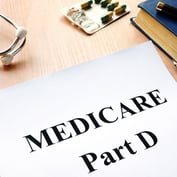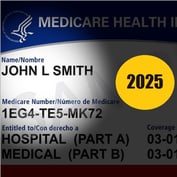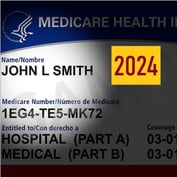| 2010 |
|
| Cost containment |
- Reduce annual market basket updates for inpatient hospital, home health, skilled nursing facility, hospice, and other Medicare providers, and adjust payments for productivity
- Ban new physician-owned hospitals in Medicare
|
| Delivery system reforms |
- Establish a new office within the Centers for Medicare & Medicaid Services (CMS), the Federal Coordinated Health Care Office, to improve care coordination for dual eligibles
|
| Part D |
- Provide a $250 rebate for beneficiaries who reach the Part D coverage gap
|
| 2011 |
|
| Cost containment |
- Establish a new Center for Medicare and Medicaid Innovation within CMS
- Freeze the income threshold for income-related Medicare Part B premiums for 2011 through 2019 at 2010 levels ($85,000/individual and $170,000/couple), and reduce the Medicare Part D premium subsidy for those with incomes above $85,000/individual and $170,000/couple
- Provide Medicare payments to qualifying hospitals in counties with the lowest quartile Medicare spending for 2011 and 2012
|
| Medicare Advantage |
- Prohibit Medicare Advantage plans from imposing higher cost sharing for some Medicare covered benefits than is required under the traditional fee-for-service program
- Restructure payments to Medicare Advantage (MA) plans by phasing payments to different percentages of Medicare fee-for-service rates; freezes payments for 2011 and 2010 levels
|
| Physician payment |
- Provide a 10 percent Medicare bonus payment to primary care physicians and general surgeons practicing in health professional shortage areas
|
| Part D |
- Begin phasing in federal subsidies for generic drugs in the Medicare Part D coverage gap (reducing coinsurance from 100 percent in 2010 to 25 percent by 2020)
- Require pharmaceutical manufacturers to provide a 50 percent discount on brand-name prescriptions filled in the coverage gap (reducing coinsurance from 100 percent in 2010 to 50 percent in 2011)
|
| Preventive services |
- Eliminate Medicare cost sharing for some preventive services
- Provide Medicare beneficiaries access to a comprehensive health risk assessment and creation of a personalized prevention plan
|
| 2012 |
|
| Cost containment |
- Allow providers organized as accountable care organizations (ACOs) that voluntarily meet quality thresholds to share in the savings they achieve for the Medicare program
- Reduce Medicare payments that would otherwise be made to hospitals by specified percentages to account for excess (preventable) hospital readmissions
|
| Delivery system reforms |
- Create the Medicare Independence at Home demonstration program
- Establish a hospital value-based purchasing program and develop plans to implement value-based purchasing for skilled nursing facilities, home health agencies, and ambulatory surgical centers
|
| Medicare Advantage |
- Reduce rebates for Medicare Advantage plans
- High-quality Medicare Advantage plans begin receiving bonus payments
|
| Part D |
- Make Part D cost sharing for dual eligible beneficiaries receiving home and community-based care services equal to the cost sharing for those who receive institutional care
|
| 2013 |
|
| Delivery system reforms |
- Establish a national Medicare pilot program to develop and evaluate paying a bundled payment for acute, inpatient hospital services, physician services, outpatient hospital services, and post-acute care services for an episode of care
|
| Part D |
- Begin phasing in federal subsidies for brand-name drugs in the Part D coverage gap (reducing coinsurance from 100 percent in 2010 to 25 percent in 2020, in addition to the 50 percent manufacturer brand discount)
|
| Tax changes |
- Increase the Medicare Part A (hospital insurance) tax rate on wages by 0.9 percent (from 1.45 percent to 2.35 percent) on earnings over $200,000 for individual taxpayers and $250,000 for married couples filing jointly
- Eliminate the tax deduction for employers who receive Medicare Part D retiree drug subsidy payments
|
| 2014 |
|
| Cost containment |
- Independent Payment Advisory Board comprised of 15 members begins submitting legislative proposals containing recommendations to reduce Medicare spending if spending exceeds a target growth rate
- Reduce Disproportionate Share Hospital (DSH) payments initially by 75 percent and subsequently increase payments based on the percent of the population uninsured and the amount of uncompensated care
|
| Medicare Advantage |
- Require Medicare Advantage plans to have medical loss ratios no lower than 85 percent
|
| Part D |
- Reduce the out-of-pocket amount that qualifies for Part D catastrophic coverage (through 2019)
|
| 2015 |
|
| Cost containment |
- Reduce Medicare payments to certain hospitals for hospital-acquired conditions by 1 percent
|








 August 03, 2010 at 08:00 PM
August 03, 2010 at 08:00 PM










